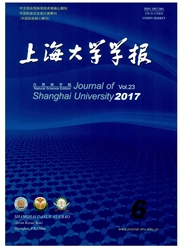

 中文摘要:
中文摘要:
通过分析拟合广西梧州市中心城区无信号交叉口的实测数据,研究了行人的过街决策行为和过街速度,并在此基础上,引入了行人决策距离和临界安全距离两个概念.实测数据表明,交通平常期行人过街速度在平均速度附近变化:如果考虑行人在路边的等待时间,行人的平均过街速度为0.6 m/s;如果不考虑行人在路边的等待时间,行人的平均过街速度为0.8m/s.经统计学D'Agostino法检验发现,交通平常期行人过街的平均速度分布不满足正态分布.
 英文摘要:
英文摘要:
This paper conducts a set of field measurements to obtain data of decision-making behavior and crossing speed of pedestrians at an intersection without traffic lights in downtown Wuzhou,Guangxi.The concepts of decision-making distance and critical safety distance are introduced through analysis and fitting of statistical data.The observed data show that pedestrians' crossing speed at off-peak hour fluctuates around the mean speed and does not perfectly obey the normal distribution based on the D'Agostino test.The mean speed at off-peak hour is only 0.6 m/s when the waiting time is counted,whereas it is 0.8 m/s without considering the waiting time.
 同期刊论文项目
同期刊论文项目
 同项目期刊论文
同项目期刊论文
 Subconscious effect on pedestrian counter flow in a modified lattice gas model with the variable tra
Subconscious effect on pedestrian counter flow in a modified lattice gas model with the variable tra Exploring the Control of Spiral Waves and Spatiotemporal Chaos by Stochastic and Cross-Coupling Meth
Exploring the Control of Spiral Waves and Spatiotemporal Chaos by Stochastic and Cross-Coupling Meth 期刊信息
期刊信息
